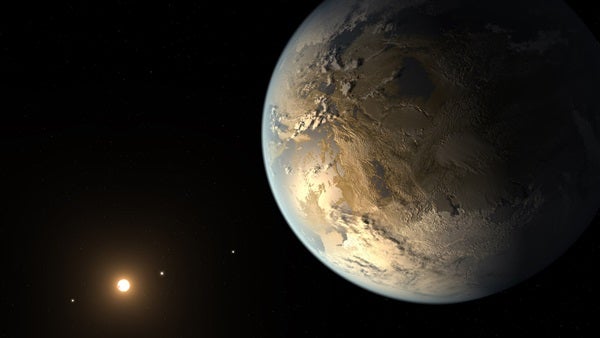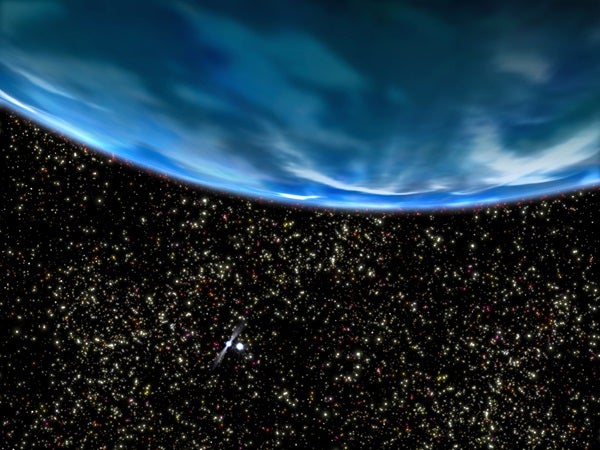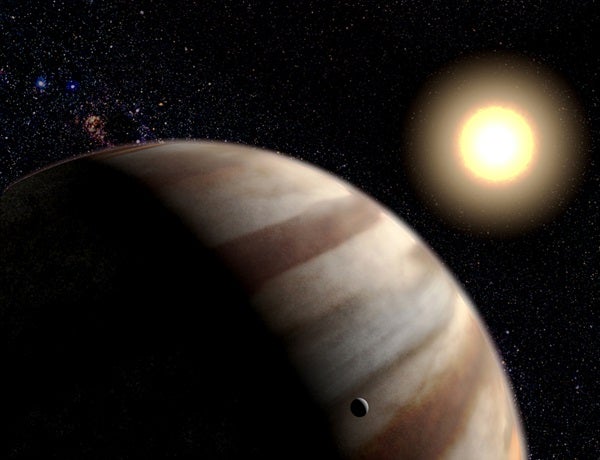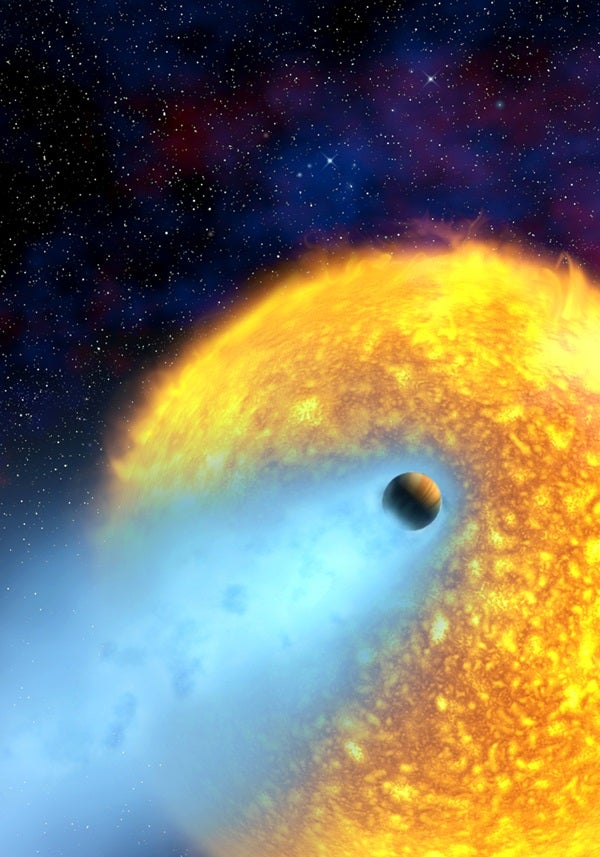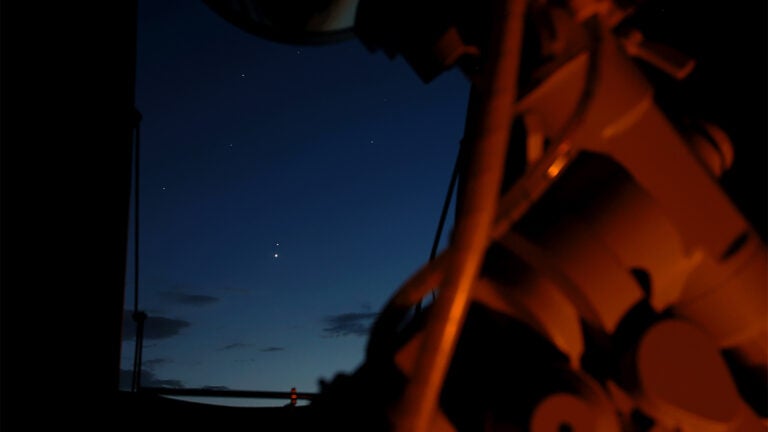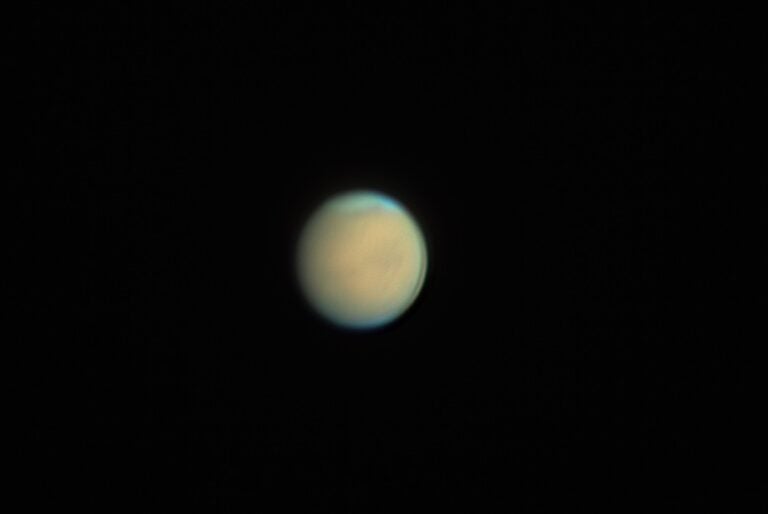Standing under a dark night sky, looking out at the Milky Way, it’s hard to imagine countless planets don’t exist elsewhere in the universe.
After all, some 200 to 400 billion stars inhabit our galaxy, and astronomers estimate at least 125 billion other galaxies exist. That’s one heck of a number of stars in the universe — at least 25,000 billion billion. Looking at the nebular hypothesis, which describes how the solar system formed, it seems clear most stars would form planets as their protogenitor clouds collapsed. Yet, due to the immense distances, seeing other planetary systems remained a supreme challenge for astronomers until the past two decades.

Bringing the universe to your door. We’re excited to announce Astronomy magazine’s new Space and Beyond subscription box – a quarterly adventure, curated with an astronomy-themed collection in every box. Learn More >>.
The first suspected detections of extrasolar planets, or exoplanets, as they are called, occurred in 1989. That year, astronomers reported variations in the radial velocities of two stars — HD 114762 in Coma Berenices and Alrai (Gamma Cephei) — and attributed those observations to the pull of exoplanets. However, follow-up data showed the cause was unknown, and it took another 10 years to confirm exoplanets orbit these stars. Meanwhile, in 1992, another team of astronomers claimed to detect an exoplanet orbiting the pulsar PSR 1257+12. Astronomers eventually confirmed this “pulsar planet,” as it came to be known.
During the mid-1990s, exoplanet detections picked up. Astronomers honed their techniques and created improved instruments, and by 1995, they found the first exoplanet around a Sun-like star — 51 Pegasi. As of July 2018, astronomers have confirmed the existence of nearly 3,800 planets orbiting stars other than the Sun.
Detecting exoplanets is tricky because the feeble light from the planets appears next to the bright glare of the host stars. At present, astronomers use about half a dozen primary techniques to find exoplanets. The first method is pulsar timing, which was used to find the planet orbiting PSR 1257+12. This technique measures anomalies in the regularity of the pulsar’s pulses.
Third is the radial velocity method, which measures the speed at which an object (in this case, a star) moves toward or away from Earth. An exoplanet’s gravitational tug creates anomalies in the star’s speed. This was the most successful method astronomers used in the exoplanet hunt until 2009, when NASA launched its Kepler telescope. Radial velocity searches have nabbed astronomers about 670 exoplanets thus far.
In the fourth method, scientists detect exoplanets as they pass in front of, or “transit,” their host stars, causing small dips in light intensity. During its primary mission, the Kepler satellite stared at the same 160,000 stars for about four years, looking for those brightness dips. Over the course of Kepler’s life, astronomers have detected over 2,300 worlds outside our solar system. They also have another almost 2,300 candidate exoplanets; most of these are likely real worlds, but scientists first need additional observations to confirm them.
The final method, direct observation, first worked in 2005 when astronomers used the Spitzer Space Telescope to image infrared radiation from two exoplanets. Since then, researchers have directly observed some 50 other worlds using this method.
With the number of exoplanets growing week by week, researchers plan new and ambitious projects to expand the number of discoveries dramatically. Before Kepler, most exoplanets found were large “hot Jupiters.” The satellite, though, found hoards of smaller worlds and even spied a few possible Earth cousins. Current and future missions such as the Transiting Exoplanet Survey Satellite (TESS), the CHaracterising ExOPlanet Satellite (CHEOPS), and the Planetary Transits and Oscillations of stars (PLATO) will use the transit method to further expand the number of exoplanet discoveries. TESS, for example, will soon look across the entire sky to find all exoplanets around dim red stars within a few hundred light-years from Earth, as well as give astronomers targets for future missions that will search for gases produced by life, like methane and carbon dioxide.

